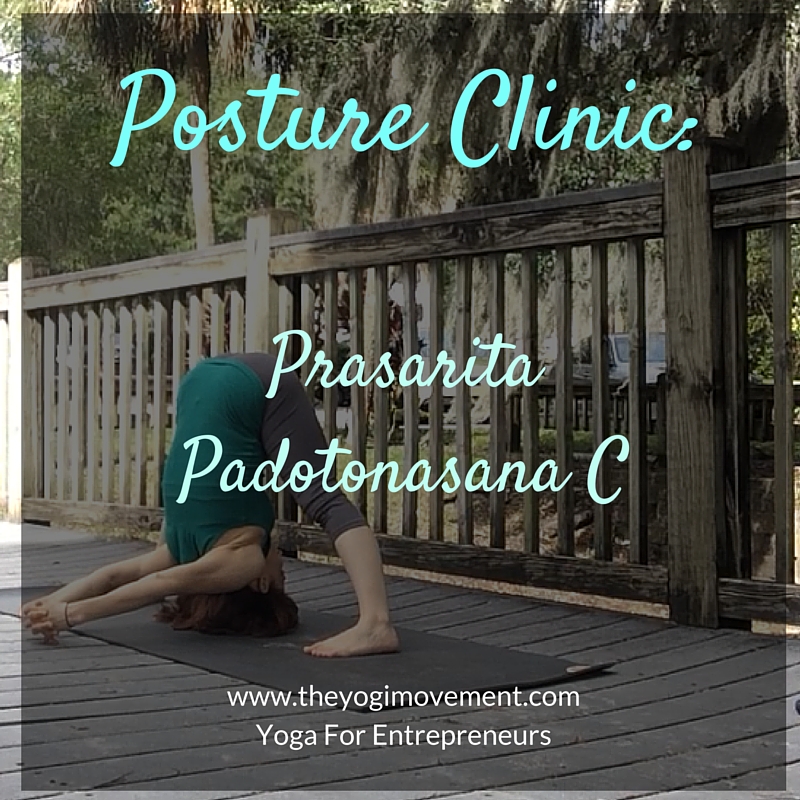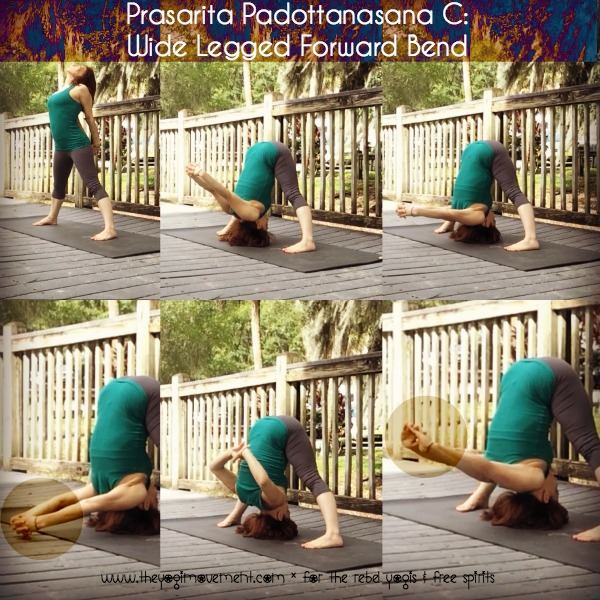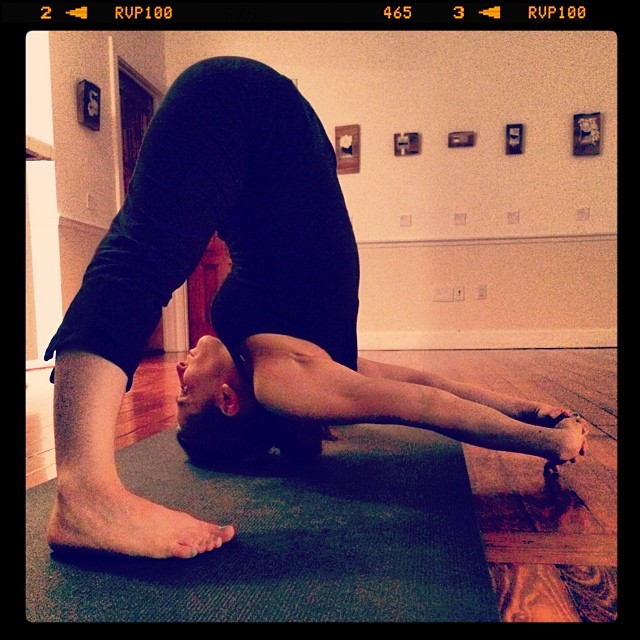Prasarita Padottanasana C is the perfect balance of strength and softness. The stronger and more control you can contain in your legs and lower body, the more you can release and let go in the upper body.
It’s also one of the hardest postures to learn to let go because the release is at the shoulders and behind the heart. This is where we tend to hold a lot of stress, hurt, resistance, and perhaps a little bit of anger.
The normal tendency in this posture is to stretch and pull the hands towards the ground, but try to release, loosen, soften, and let gravity do the work.
How To Do It:
Bring your feet double shoulder width apart. Take a second and really ground the feet.
Make the legs strong. Engage the quadricepts and pull up the knee caps.
Inhale as you clasp your hands behind your back, lift the heart. Try not to squeeze your shoulders too tight. Some teachers say to squeeze the palms together, but I teach to let them open and just clasp the fingers. Keeping the palms open helps to let go and soften.
Exhale as you fold forward leading with the heart, and keeping a straight spine the whole time.
Bring your head towards the ground.
Take a second here and ground the feet again. Pull up the kneecaps, and bring the hips forward. Press the mat apart with your feet.
Notice how the stronger your lower body becomes, the more you can release your torso, and bring your head towards the ground. Try to bring your torso between your thighs.
Now, focus on the shoulders and soften.
With every exhale release your hands away from your back towards the ground.
Take five breaths here.
If you were able to release your hands to the ground, the next step is to bend at the shoulders and turn the hands the opposite way. Then, try to release the hands to the ground again. Hold for another five breaths.
You can see both variations in the image above. I’m still working on part 2!
Inhale come all the up.
Exhale hands to the hips.
Proceed to Part D if you know it, or come to Samastitihi (Mountain Posture).
What to do while you’re holding the posture:
Just focus on the shoulders and softening. Notice if you’re stretching and pulling, and then try to let go even more.
Bring your hips forward as your release your hands to the ground as well. Besides the balance of strength and softness, another big part of this posture is trust. Can you stay strong enough to keep yourself from falling over?
Try to bring your hips forward and balance as you lower your hands down.
Don’t get discouraged if this takes you awhile. I wasn’t able to do this posture for four years.
I actually remember the day I was able to do it. I had to take two weeks off of practice because I had stitches. I tried to practice, but the postures were stretching my stitches.
It was so tough to let go because I’m so dedicated to the tradition.
During that time, I focused on sitting meditation and pranayama.
My first day back to practice, this posture came out of nowhere. To me, that’s proof that yoga is not about just becoming more advanced in postures, but a consistent practice is finding a way to create peace in your mind even if it’s not your normal practice.
I was forced to find a new way to practice for those two weeks, and it was sitting meditation that helped me to let go and deepen my practice.
These are the moments that teach us about non attachment, and cause a ripple effect in every part of life. It’s kind of awesome how we can see the reflection in asana practice.
Just keep letting go, surrender, open your heart, and breathe deep.
That is practice.
Love to you always,
Monica



Leave a Reply